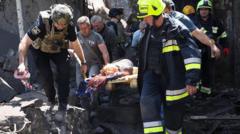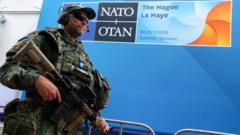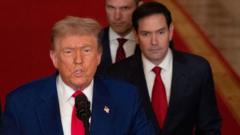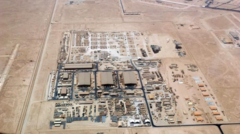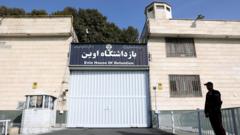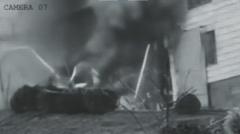A recent Pentagon assessment shows that US military strikes aimed at Iran's nuclear facilities have not significantly impacted the country's nuclear ambitions, indicating only a temporary setback.
US Air Strikes Fall Short of Dismantling Iranian Nuclear Program, Pentagon Claims
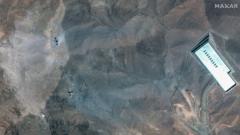
US Air Strikes Fall Short of Dismantling Iranian Nuclear Program, Pentagon Claims
Pentagon assessment reveals limited effectiveness of US strikes on Iran’s nuclear sites
The strike carried out by the US failed to eradicate Iran's nuclear program, merely postponing its progress by an estimated few months, as per the Defense Intelligence Agency's findings shared with CBS. The strikes targeted three critical sites—Fordo, Natanz, and Isfahan—but did not destroy Iran's enriched uranium stockpile.
Following the military action, which employed powerful "bunker buster" bombs designed to penetrate deep underground, initial assessments reportedly contradicted President Donald Trump's characterization of the mission as having "completely and totally obliterated" the nuclear facilities.
Sources within the Pentagon disclosed that while significant damage occurred to aboveground structures and the entrances of two facilities were sealed, most centrifuges remained intact. Additionally, it was reported that portions of Iran's enriched uranium stockpile had been relocated prior to the strikes, limiting the overall impact of the military intervention.
Defense officials acknowledged that while some infrastructure was compromised, the capabilities for uranium enrichment had not been fundamentally altered. As the nation seeks to recuperate from the assault, the timeframe for resuming its nuclear program hinges primarily on the duration it takes to conduct repairs and restore operations.
As the situation develops, there awaits further insight regarding the future of Iran's nuclear capabilities and the implications for regional security.
Following the military action, which employed powerful "bunker buster" bombs designed to penetrate deep underground, initial assessments reportedly contradicted President Donald Trump's characterization of the mission as having "completely and totally obliterated" the nuclear facilities.
Sources within the Pentagon disclosed that while significant damage occurred to aboveground structures and the entrances of two facilities were sealed, most centrifuges remained intact. Additionally, it was reported that portions of Iran's enriched uranium stockpile had been relocated prior to the strikes, limiting the overall impact of the military intervention.
Defense officials acknowledged that while some infrastructure was compromised, the capabilities for uranium enrichment had not been fundamentally altered. As the nation seeks to recuperate from the assault, the timeframe for resuming its nuclear program hinges primarily on the duration it takes to conduct repairs and restore operations.
As the situation develops, there awaits further insight regarding the future of Iran's nuclear capabilities and the implications for regional security.


